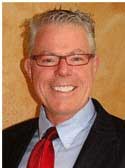
By Mark Hinton
Reinforcing the message from doctor to optical staff–and involving the patient–improves the chances that the patient will end up with the best possible eyewear option.
As the patient transitions from eye exam to the optical dispensary, the best outcome results from an information-based interaction between the doctor and optical expert and in front of the patient. Here are examples of how the doctor–instead of simply passing the patient–can dialogue with the optical team and improve the odds the patient will purchase the best ophthalmic lenses that suit their visual and lifestyle needs.
Optical Staff Reference Your “Advice” and “Prescription”
During the patient “transition of care” to the dispensary, theoptometrist shouldinvolve the optician by showing them the exam results in the exam suite or in the dispensary. Be sure the optical associate interacts and collaborates with your “advice,” and “prescription,” not “recommendation,” along with both the doctor and the optician referring to that advice in terms of an eyewear prescription. For instance,the doctor should say: “Ms. Jones, after evaluating your vision, my very best advice [positioned as the expert] is Ultra-Clarity High Definition lenses, and that’s what I’ll prescribe for you today!” The optician should reinforce that prescription. It is important when discussing your eyeglasses prescription with patients that the optical expert says it is your “advice,” rather than your “recommendation” that they buy such-and-such lenses. “Advice” and “prescribe”connote an informed opinion more than “recommendation,” which patientsmay associate with something more casual like”recommending” a restaurant or “recommending” a hair stylist.
Doctor, Optician Together Advance Conversation
In the presence of the patient, the optical associate may express: “Wow, Dr Smith, this prescription is ideal for the ‘Ultra-Clarity’ High Definition lenses your patients are raving about!” and then you, the doctor, cancollaborate and say: “Yes, I agree! I was thinking the same! The sight through that lens will match my refractive results… good! Let’s do that!” At which point the optical associate may say: “It would be ideal for polarized sun lenses, too!” and you, the doctor, couldsay: “That’s why you’re my optical expert!” Then, to the patient: “Katherine, Theresa’s going to address further questions for you and provide you with choices today. I’ll see you next year unless you need me before!”
Role-Play Ideal Hand-Off Dialogue
Work with your optical team to refine and practice doctor-optical staff dialogue that makes sense within the culture of your practice. The continuity of care in transitioning the patient for a successfuleyeglasses salelies in the doctor and optical team presenting the same unified message to the patient. Toensure that unity of message occurs,hand-off conversations should beregularlyrehearsed, practiced and refined.
Capture, Captivate Patient
Now, how’s the optical team going to “capture and captivate” that “consumer?”A disconnect will occur if after your advice, the optical associate asks the patient: “So, are we thinking about some new glasses today?” or “Did you want to look at new frames?” or any expressions that will place the optical associate in the order-taker position, giving the consumer a “take charge” position. It may sound more like: “Ms. Jones, again, my name is Tom, may I call you Katherine?” [First name ASAP] “Call me Kathy!” “Thank you Kathy! As I work to remove confusion and understand your needs, I’ll offer you choices so you can make informed decisions that will appeal to you. I want to be sure I don’t miss anything that’s going to be important for you today!”
It’s confusing to purchase eyeglasses! And we often confuse them further when we don’t speak their language, don’t ask questions or assume their need! Ask your consumer: “Kathy, do you find it as confusing, as many of our other patients do, to purchase eyeglasses and understand your purchase and the value, too?” You “soften” the question and invite an answer when you express that others feel the same.
Open Two-Way Dialogue; Don’t Dive into a “Presentation”
Optician: “Kathy, since lenses vary a lot in their ability to deliver quality of sight, I won’t make any assumptions. Do you have questions regarding your eyeglasses that I can address for you?”
Optician: “Do you hope to see as sharp and clear through your new glasses as you did during the exam today?”
Optician: “Kathy, So I understand clearly, how do you rely on your glasses throughout your day, at work, leisure, reading, computing, sports, driving, and after dark?” Get answers to these questions before proceeding in your sale.
Here’s another approach for opticians: “Kathy, how do you rely on your eyeglasses throughout your active day and what aspects of your sight do you want to improve the most?”
Set the Stage with Value
When you’re in agreement that yourpatient wants to see the best she can, you can then move to “setting the stage” with value. It may sound something like this: “Kathy, your prescription is ideal for the “Ultra-Clarity (AR) High Definition Lenses,” and our patients are really happy with the sharp, crisp, clear sight. I wish we could make them for every prescription, so everyone couldexperience this high quality of sight.
Find out withintwo minutes instead of 42 minutes what the goals and expectations of your eyeglasses consumer are. The odds are you’ll be able to gain trust, collaborate, advise and provide choices, with benefits, for the products that will meet their needs and wants. Whenthe patientsays it, thepatientowns it. Whenthe opticiansays it,the optician assumes.This is commonly known as “show up and throw up!” You’ll often find out about 42 minutes later thatthe patientis confused and you’re ‘back peddling’ your way out of “sticker shock.”
Train youroptical team to ask smart questions, be concerned, know the benefits of your products and express that other patientshave experienced happiness with the lenses you have prescribed.
Mark Hinton is a facilitator, product knowledge expert and dialog coach with eYeFacilitate Inc. You may reach out to Mark with questions at eyefacilitate@gmail.com





















